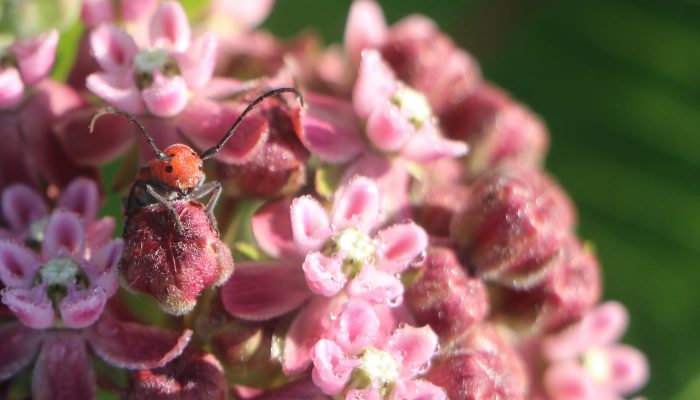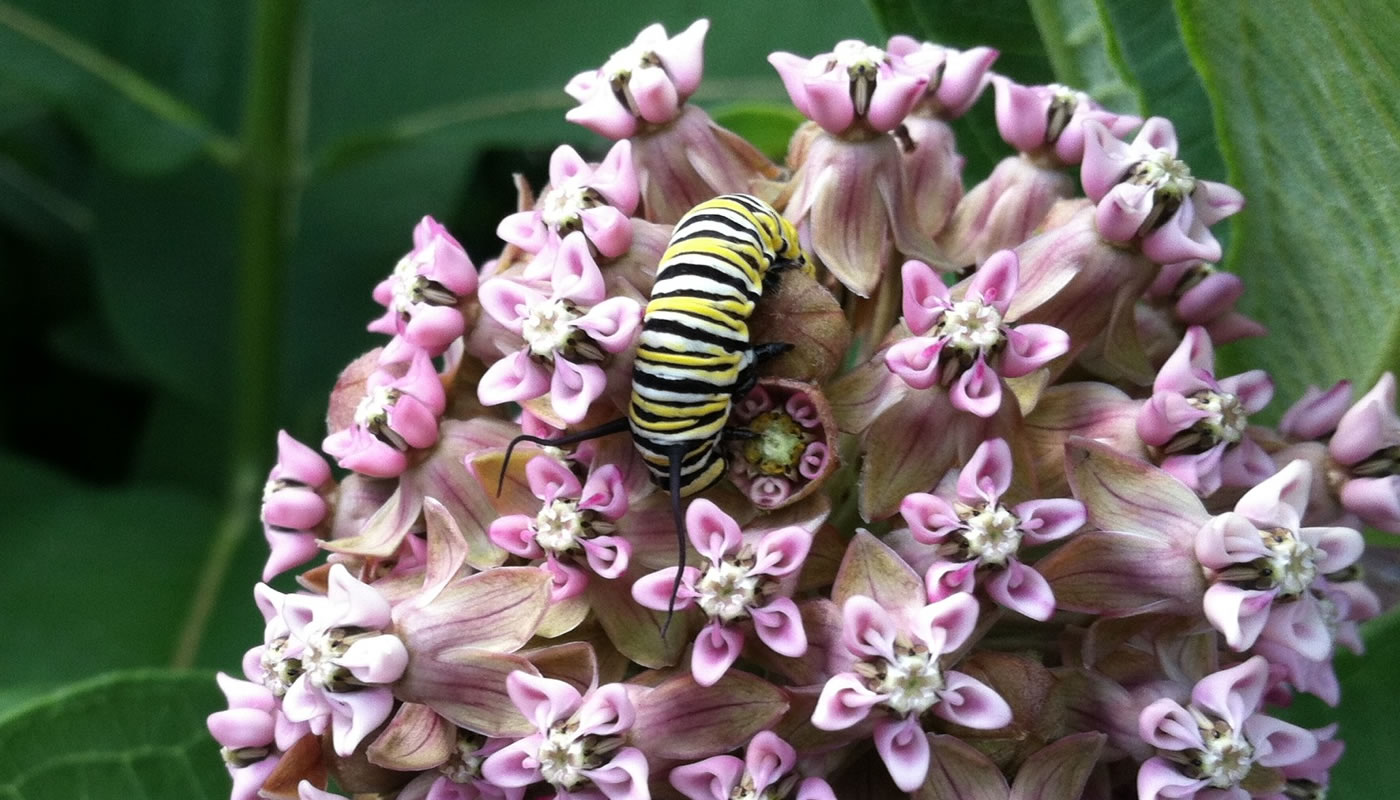Many species of milkweed plants (Asclepias sp.) are now in bloom all around the Chicago region. If you observe these plants closely, you’ll discover a microhabitat full of insects that depend on milkweed for their diet, reproduction and more.
The most well-known insect that depends on milkweed is the monarch butterfly. Adult butterflies can feed on the nectar of many flowers, but they lay their eggs exclusively on milkweed in our area. Monarchs usually have four generations per year, following the wave of sprouting and blooming milkweed plants from their hibernation areas in northern Mexico in spring, to southern Canada by mid-summer. The fourth and final generation of monarchs migrate more than 3,000 miles back to the mountains of Mexico, hibernate, then fly north in the spring of the following year in search of milkweed on which to lay their eggs before they die.

The red milkweed beetle, another highly visible insect dependent on milkweed, is bright red with black spots. Their bright red color (like the bright orange of the monarch) displays their toxicity and distastefulness to potential predators. Adults eat milkweed leaves and flowers, while the larvae feed within milkweed roots, both absorbing toxicity from the leaves or sap.
Other insects exclusively associated with milkweed include the small and large milkweed bugs, milkweed tussock moth, several species of aphids and others. While not dependent on the plant, many species of butterflies, moths, bees, flies and others feed upon the rich nectar contained in milkweed blossoms (the nectar does not contain any toxins). With such a variety of visitors, milkweed flowers and leaves are also an ideal place for predatory insects and spiders to stalk prey.
Next time you see a milkweed in a prairie, wetland, garden or even empty lot—stop a while and observe this amazing plant and the microhabitat it hosts!
Interested in hosting your own microhabitat? Check out upcoming gardening events.

